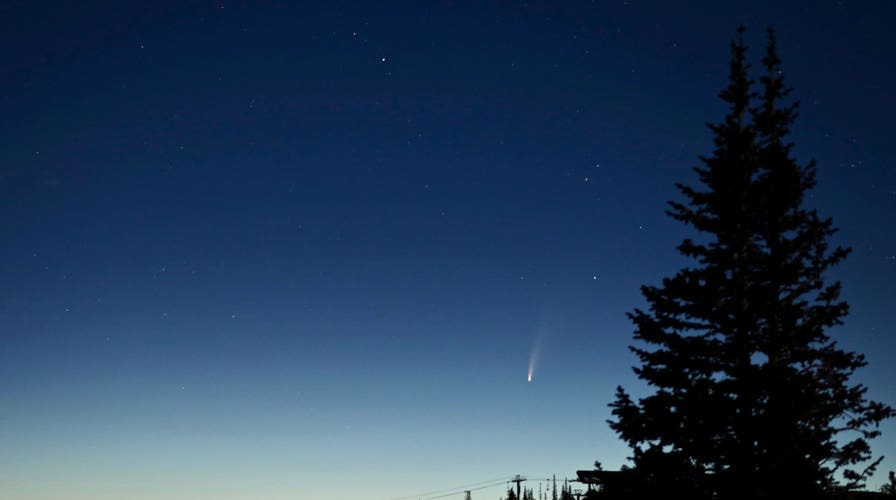Stunning image reveals what it’s like to stand on a comet
A stunning image from the lost Rosetta spacecraft revealed what it would look like to stand on a comet.
Skywatchers in the northern hemisphere are enjoying the sight of a newly discovered comet this month.
The comet, dubbed C/2020 F3, was discovered in March by NASA’s NEOWISE space telescope.
AMATEUR ASTRONOMER USED NASA SATELLITE DATA TO DISCOVER NEW COMET

Comet C/2020 F3 photographed low in the morning sky on July 7, 2020. (Credit: NASA/Bill Dunford)
“As of July 7, the comet was easily seen through binoculars, with some observers able to see it with unaided eyes,” NASA said on its website. “Through about the middle of the month, the comet is visible around 10 degrees above the northeastern horizon (the width of your outstretched fist) in the hour before dawn. From mid-July on, it's best viewed as an evening object, rising increasingly higher above the northwestern horizon.”
NASA notes that the comet’s closest approach to earth will be on July 22, at a distance of about 64 million miles. “The comet takes about 6,800 years to make one lap around its long, stretched out orbit, so it won't visit the inner solar system again for many thousands of years,” the agency explained on its website.
EARLIEST EVIDENCE OF DEATH BY METEORITE DISCOVERED
The space agency describes comets as “cosmic snowballs of frozen gases, rock and dust that orbit the Sun.” The size of a small town in their frozen state, comets spew dust and gases as their orbits bring them closer to the sun.
“The dust and gases form a tail that stretches away from the Sun for millions of miles,” says NASA, noting that there are 3,650 known comets.
CLICK HERE TO GET THE FOX NEWS APP
In another project, an amateur astronomer has used data from NASA’s Solar and Heliospheric Observatory (SOHO) satellite to discover a new comet that was visible in late May and early June.
Follow James Rogers on Twitter @jamesjrogers









































